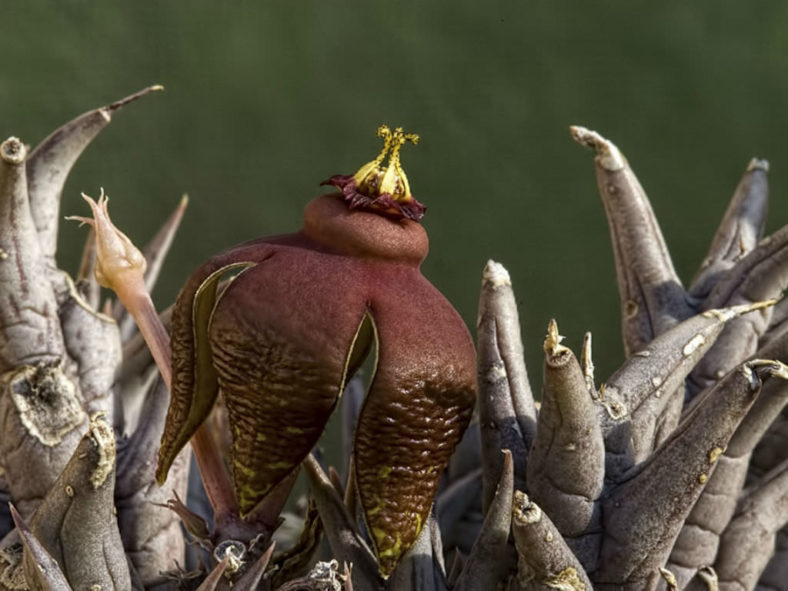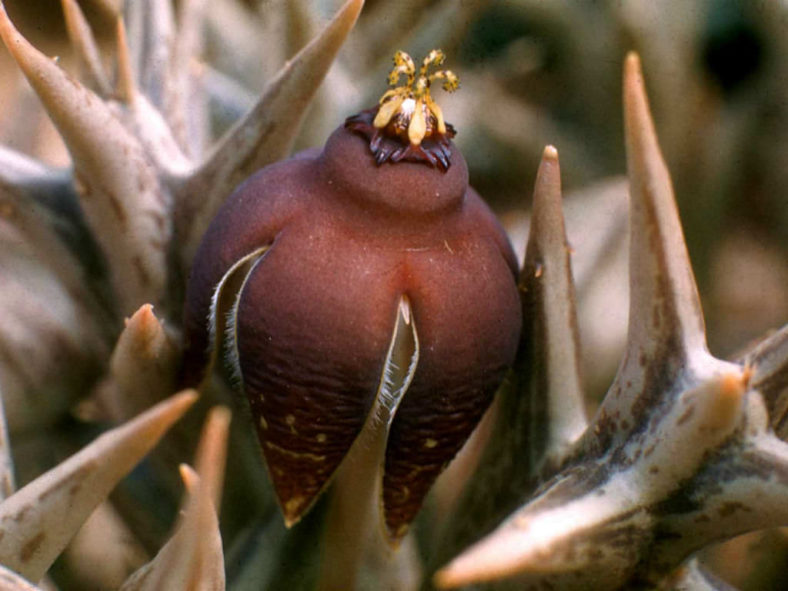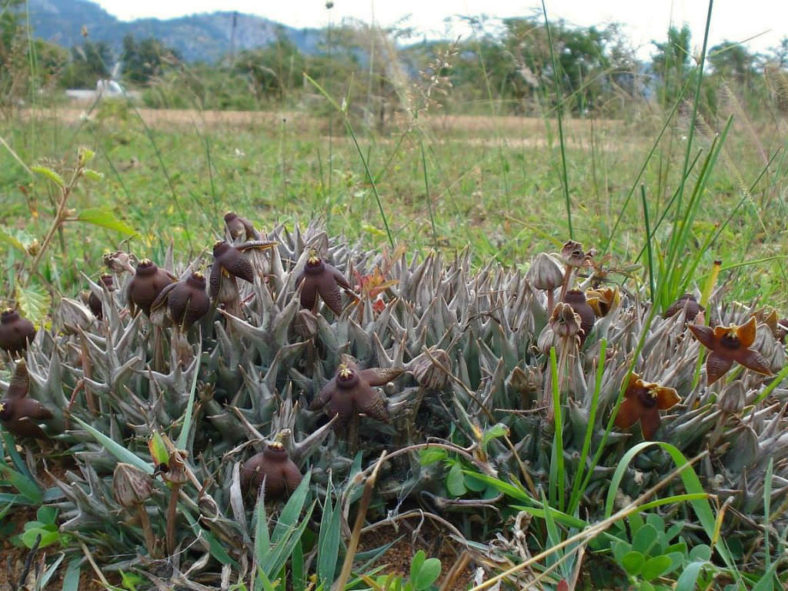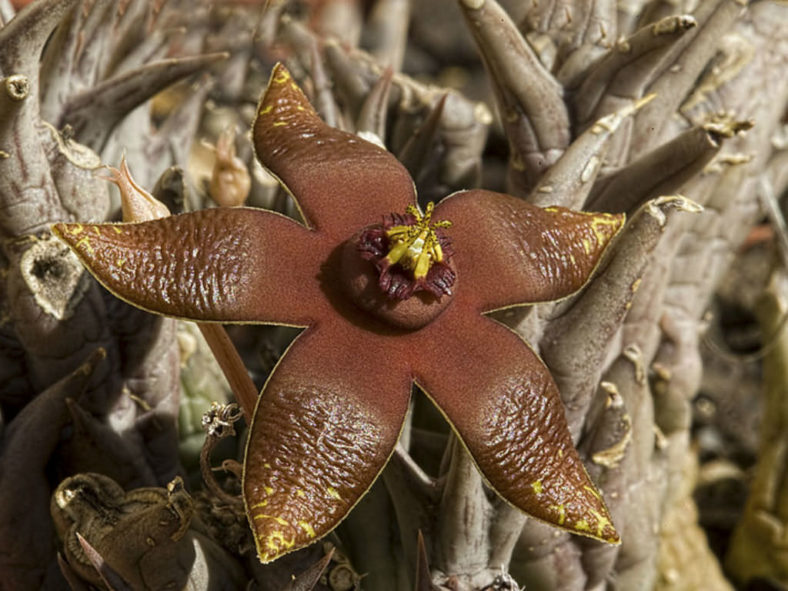Scientific Name
Orbea umbracula (M.D. Hend.) L.C. Leach
Synonym(s)
Stapelia umbracula, Stultitia umbracula, Ceropegia umbracula
Scientific Classification
Family: Apocynaceae
Subfamily: Asclepiadoideae
Tribe: Ceropegieae
Subtribe: Stapeliinae
Genus: Orbea
Etymology
The specific epithet "umbracula" (pronounced "um-BRAK-yoo-luh") means "shade, shelter; parasol, umbrella" and refers to the shape of the corolla of the flowers of this species.
Origin
Orbea umbracula is native to Zimbabwe and Mozambique. It grows in sandy and granitic soils in dry, rocky areas, typically at elevations ranging from 980 to 3,280 feet (300 to 1000 m).
Description
Orbea umbracula is a small succulent with mottled greyish-green stems that have conspicuously large, ascending or spreading, tubercular teeth along the angled ridges. The stems are 4-angled and can grow up to 3 inches (7.5 cm) long and 0.3 inches (8 mm) in diameter, branching underground and forming clumps or mats. The teeth can measure up to 0.8 inches (2 cm) long.
The flowers are chocolate-brown, occasionally rusty-brown, and streaked or mottled with yellow. They appear from late summer to fall. The five-pointed corolla is strongly reflexed, inversely bell-shaped, and can reach a diameter of 2 inches (5 cm). The corolla margins have hairy fringes like eyelashes.

How to Grow and Care for Orbea umbracula
Hardiness: USDA hardiness zones 10a to 11b: from 30°F (-1.1°C) to 50°F (10°C).
Several species are fairly easy to grow. Others, often those with slightly hairy stems and the more unusual flowers, are more challenging and require careful watering (with some fertilizer) during the growing season and complete water withdrawal during the winter months. A minimum winter temperature of 50°F (10°C) is acceptable if the soil is kept absolutely dry. A heated growing bench or incubator can help delicate plants survive the colder months. However, many species live under shrubs in their habitat and prefer light shade rather than full sun.
A gritty compost is essential, and clay pots are advisable for the more delicate species. Some growers prefer mineral-only compost to minimize the chance of a fungal attack on the roots. A layer of grit on the surface of the compost prevents moisture from accumulating around the base of the stems.
Keeping Stapelias and their roots free of pests, such as mealybugs, is key to success, as fungal attacks often occur due to insect damage to the stems.
See more at How to Grow and Care for Stapelia.
Links
- Back to genus Orbea
- Succupedia: Browse succulents by Scientific Name, Common Name, Genus, Family, USDA Hardiness Zone, Origin, or cacti by Genus
Photo Gallery
Click on a photo to see a larger version.


